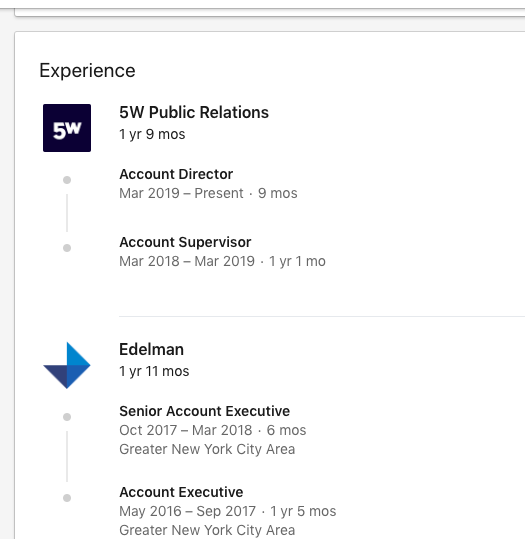By Chandra Turner
I got all of my media jobs via word of mouth. For decades, the media industry was a tight-knit group and we got our jobs and made our hires based on reputation and referrals. When hiring managers got stuck, we’d go through the mastheads of mags we respected and poached accordingly. We rarely worked with recruiters. We didn’t need to. And our HR departments focused on the sales or marketing roles, rarely editorial. When they did handle edit, they usually gave us terrible candidates. They just didn’t get it. So as editors we were trained to avoid HR, scout our own people, and get our jobs and candidates via word of mouth. For a long time it worked.
That’s not the case anymore. That internal media network has blown up. Our pool of candidates has scattered. Our hiring needs are more complicated. And there is so much noise in the space. So many jobs on Linked In. So many job alerts from Zip Recruiter. So many reviews from Glassdoor. It’s overwhelming. It’s overwhelming to search for a job and it’s overwhelming to find candidates. I know because I’m on the front lines: I am a recruiter for my own recruiting company, The Talent Fairy.
If you are looking for a new opportunity, there are a few things you must do to make yourself discoverable that you didn’t have to do before. Follow these tips that will make it easier for hiring managers and recruiters to find you and approach you for the right role.
Fill in your metadata. Linked In now has many places to help optimize your profile so you show up in more searches and filters. Take advantage of these. There are data points you can fill out in your top section/header as well as in the Job Preferences / Open to Work tabs. Make sure you have the right industry selected (ahem, if you started out in magazines you may have “periodicals” as your industry!). Include the job titles you are looking for, the type of work you are open to (i.e., contract, hybrid, remote), the cities you would work in / move to, etc. This is also where you can choose to have the Open to Work badge on your profile pic. I don’t recommend it, btw.
Make your headline a title. Yes, lots of people write clever snippets for their headlines like, Collaborative team member and storyteller extraordinaire ready to wow your next client! This is not the place (save that for About section, below). It’s too crowded at the top of your profile for all those words. You need to get across quickly and succinctly who you are, and most importantly, you want that headline to match the search terms that hiring managers and recruiters are using. So go with your current title, or even better: the title of the role you want next, i.e., Content Director, Audience Development Specialist, Thought Leadership Editor, Senior Content Strategist.
Add an About Section. Keep it super short and to the point. Too long — MEGO*. It should be your Unique Value Proposition which is made up of three things: your unique skill set, your subject area expertise, and the type of work environment that you thrive in. Too hard? Just write a few lines about what you want your next role to be, i.e. I’m an experienced fashion writer and editor who has worked for global fashion brands. I’m now looking for a role at a mission-aligned, sustainable fashion company.
*MEGO — my eyes glaze over! This is an old editor margin note that translates as, You are boring me. Get to the point already!
Trick out your profile with visuals. I come to your Linked In profile to confirm what I have learned about you from an outside source, either a personal referral or through search. So when I open it up, I want it to smack in my face that you are exactly who I want you to be — and the easiest and quickest way to do that is with visuals. Add as many thumbnails of your work as possible in your job experiences and even add a Featured section with more examples. Even if no one clicks through to read (which frankly, they likely won’t), the images alone speak volumes about your skillset and subject area expertise.
Add your personal email to the Contact Info section. Then check that email account on the regular. This is the best way for recruiters and hiring managers to reach you. (Please don’t make me DM you on Instagram!). No one wants to email you at your work address; I do it when I’m desperate, but it just feels icky. Also note that if you are not within a 3rd degree connection of the hiring manager or recruiter they may not be able to direct-message you depending on their Linked In subscription. While you’re in there, make sure you have your portfolio site (if you have one) also listed.
Add a profile pic. If you don’t have a photo, I won’t reach out to you. I’m just not convinced you are a human. And please smile. I want to interview (and hire) someone who is engaged and friendly, not too-cool-for-school smug and / or literally tight lipped.
Add a background photo. Linked In provides an awkward horizontal blank space at the top of your profile section. Make sure you not only fill it in with an image — but use it to show off your subject area expertise and / or unique skill set. Linked In is so much about the visuals; use this to your advantage. If, say, you are a beauty editor choose a row of lipsticks; a food editor a delicious table top; a design editor a gorgeous interior.
Check your settings. I understand the need for privacy, but if you want recruiters to find you, make sure you haven’t blocked them out because your settings keep you hidden from distant connections. At the very least, update this email setting so you get an email alert when you get a DM. Sure, you can ignore it if you aren’t interested. But the ones who respond to me are the ones I put in my database for future opportunities. And the ones who don’t, I make a note that they didn’t respond so I’m less likely to hit them up for the next role.
Clarify your expertise. No one is looking for a generalist. In media and marketing, we hire for a particular skill set PLUS subject area expertise. So be clear what yours are — or what you want them to be. Personal finance? Beauty? Health? Tech? 24 hour news? B2B communications? It’s OK if there’s more than one. But it’s not OK if there are none.
Write out your job experience. What’s the point of having a Linked In profile if you’re just going to list the name of your company and your title? Explain what verticals you work on, what kinds of content you are creating, the names of projects you have spearheaded — and just like on your resume: Tell me how your work impacted the company! At an agency? List the names of the clients you work with, or at the very least, the product categories they represent. And say it conversationally and in terms that everyone can understand. Hello! You are a content creator, not an accountant! Create a great piece of content with your Linked In profile. (Here’s a good example.)
See a what-not-to-do below. I cut off the name which furthers my point that this could be anyone! Nothing special here. Moving along! I don’t know how many PR manager profiles I’ve looked at in the last month who are just long lists of “Account Executive” titles with different agency names next to them. I have no idea what you did in those roles or what kind of brands you represented. Who are your clients? What do you dooooo? Please give me a hint!
Fill in your skills. There are now three places to do this: Within your About section, within each job experience, and within the Skills section at the very bottom of your profile. Choose the ones that best correspond to the job you want rather than everything you have ever done. Why? Because Linked In’s algorithm is based on the skills you list and shows if you are qualified (or not) for the role you are after.
What doesn’t matter on Linked In.
•The endorsements. They are nice to have but not necessary. TBH, I usually don’t get that far down on your profile anyway. (I will sometimes use endorsements to figure out how to address someone, i.e.,if you are Alison, people call you Allie.)
• How much you post. A lot of people disagree with me on this, but as a recruiter I don’t care about how much you share or even if you share at all. Sure, if it’s relevant and helpful to their careers, share whatever you have to say with your industry colleagues. But don’t just write posts for the sake of “having a presence.” I am not scrolling through my Linked In story feed looking for candidates based on their posts. That’d be a huge waste of time. I’m searching for candidates based on their skills and expertise which are highlighted in their profiles. So put the work into fully optimizing your profile, and I assure you you’ll show up in more searches.
Chandra Turner is a recruiter and career coach who specializes in connecting editorial and content marketing professionals with brands, nonprofits, and startups.





